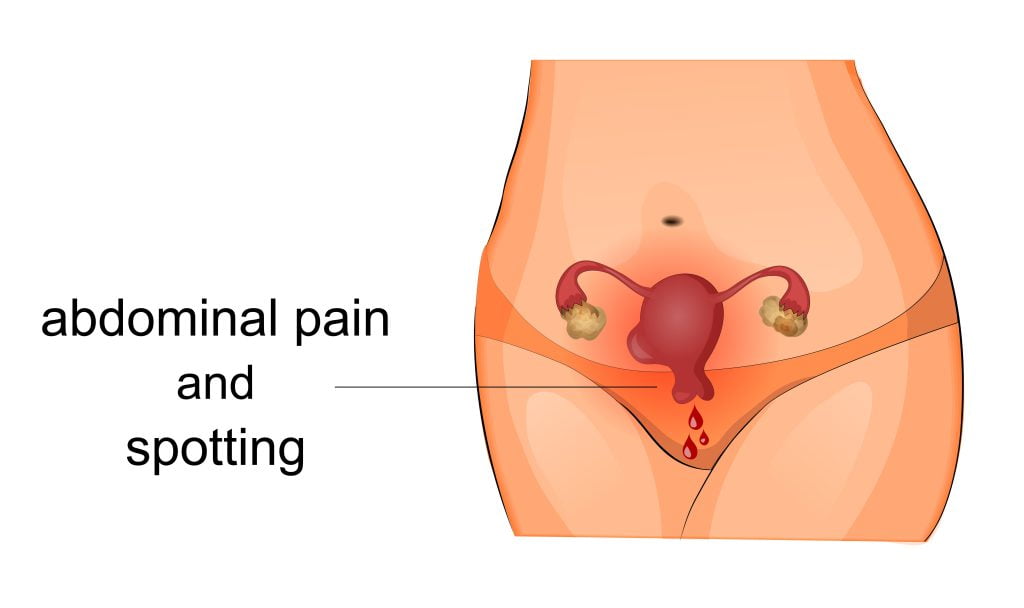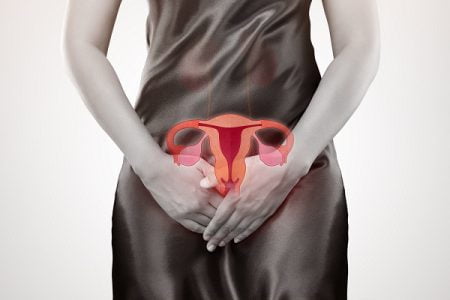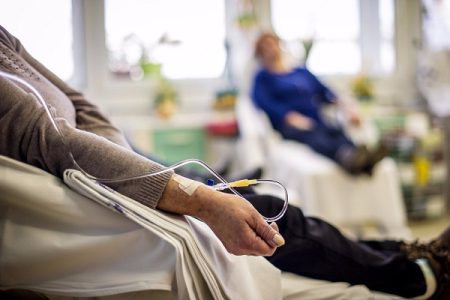What is a cervical biopsy?
A cervical biopsy is a diagnostic procedure to detect and evaluate cervical cancer (cancer of the cervix called cervical cancer). It involves removal of tissue from the cervix to test for abnormal or precancerous changes, or cervical cancer.
What is cervix?
Cervix is the lower, narrowed part of the uterus in women. It forms a canal that opens into the vagina.
When is a cervical biopsy done?
A cervical biopsy is generally done when an abnormality has been found during a routine pelvic exam or other tests such as Pap smear or HPV test.
Abnormalities can include the presence of the human papillomavirus (HPV) viruses, cells that are precancerous (called pre-cancers).
Types of cervical biopsy: Procedure of cervical biopsy
There are several ways in which cervical biopsies can be done depending on the way tissue is removed from the cervix to detect cervical cancer. The following are commonly used types of cervical biopsies:
Punch biopsy
In this method, small pieces of target tissue are taken from the cervix with a small instrument. This device is called “biopsy forceps.” The doctor may apply a dye on the cervix to make it easier for your doctor to see the abnormalities.
Cone biopsy
Cone biopsy is a surgery that uses a scalpel or laser to remove large, cone-shaped pieces of tissue from the cervix. A general anesthesia will be given before doing the procedure.
Endocervical curettage (ECC)
During ECC procedure, cells are extracted from the endocervical canal. It is the area between your uterus and vagina. This is an area that can’t be seen from the outside of your cervix. Therefore, the doctor will use a hand-held instrument called a “curette” to scrape the sample.
More: About Cervical Cancer (Overview and Types) Causes, Symptoms, Signs, Diagnosis, Treatment, Prevention
More: Early Detection, Prevention, and Screening of Cervical Cancer
What are the risks for a cervical biopsy? What are the side effects of a cervical biopsy?
Some complications that may occur in a cervical biopsy are:
- Infection
- Bleeding
- Risk for infertility and miscarriage particularly in cone biopsies.
What you need to inform to your doctor before a cervical biopsy?
You should tell your doctor about:
- Any allergies or sensitivities to medicines, iodine, or latex or contract dyes or any drugs
- If you are pregnant or planning to be pregnant soon. Not all cervical biopsies can be done during pregnancy.
- Period dates: A cervical biopsy should preferably be scheduled about 1 week after the period.
- Your general health condition.
- You should also make sure to discuss any medication you might be taking with your doctor.
- Remember to tell your provider if you have had a bleeding problem. Also inform him or her if you are using any blood-thinning medicines, anticoagulants or other medicines that affect blood clotting. You may need to stop them before the procedure.
What can cause a cervical biopsy inaccurate or less accurate?
These things can make a cervical biopsy less accurate. Cervical biopsies should be avoided in these situations:
- Menstruation (periods)
- Pelvic inflammatory disease
- Inflammation of the cervix
Preparing for a cervical biopsy: How do I get ready for a cervical biopsy?
Try to schedule your cervical biopsy for the week after the periods. This will help your doctor get a clean sample of the scraped tissue.
You may be asked to stop taking medications that could increase the risk of bleeding. Some of them are:
- Naproxen
- Aspirin
- Ibuprofen
- Warfarin
Other things that you may be asked for before the biopsy procedure are:
- Avoid use of tampons, douches, or vaginal creams for at least 24 hours before the biopsy.
- Avoid sexual intercourse for 24 hours before the procedure.
- Stop eating at least eight hours before the procedure in case you are going for a cone biopsy or another type of cervical biopsy that us done with a general anesthetic.
- Your doctor might ask to take acetaminophen or another pain reliever on the day of the procedure.
- Carry some sanitary pads as you might experience some bleeding after the biopsy
- It’s a good idea to bring a family member or a friend along so they can support you and also drive you back home, especially if you’re given general anesthesia. It can make you feel drowsy after the procedure.
- Follow any other instructions as recommended by your provider.
- You will be asked to sign a consent form that gives your permission to do the procedure to the healthcare provider/hospital. You must read it carefully.
How is a cervical biopsy done? What happens during a cervical biopsy?
The procedure for cervical biopsy goes like this.
The doctor will do a normal pelvic exam. You’ll be asked to lie down on an exam table with your feet attached to stirrups.
Your doctor will give you a local anesthetic to numb the area. In some types of biopsies such as a cone biopsy, you’ll be given a general anesthetic so that will you fall asleep.
Your doctor will then insert a speculum into the vagina to keep the vaginal canal open wide during the procedure for better access and visualization.
The team there will first clean the cervix with a solution of vinegar and water. This process may cause a bit of burn, but it is not very painful. He or she may apply iodine on the location if a Schiller’s test is being done to identify any abnormal tissues.
The doctor will remove the abnormal tissues with forceps, a scalpel, or a curette.
After the biopsy is done, the doctor may pack your cervix with some type of absorbent material to reduce the amount of bleeding. If a cone biopsy is done, the doctor may pack the cervix with a pressure dressing. Your will be told how to remove this packing when you are back home.
Bleeding from the biopsy site may be controlled with a paste-like topical medicine that can be applied on the vaginal canal or cervix. The doctor may also use electrocauterization or stitches (sutures) to stop the bleeding.
Not every biopsy requires these steps. Some are much simpler and quick.
Cervical biopsy pain: Is a biopsy of the cervix painful?
In most cases, cervical biopsy is not a painful procedure. Your doctor might ask to take acetaminophen or another pain reliever on the day of the procedure.
In some types of biopsies such as a cone biopsy, you will be given anesthesia to make you asleep.
A cervical biopsy will cause mild discomfort to you but is usually not painful. You may feel some pressure or cramping as the procedure is done.
You might experience some bleeding after the procedure. You should follow the recommendations of your doctor as discussed herein.
Recovery after a cervical biopsy: What happens after a cervical biopsy?
Your recovery will depend on the type of biopsy you had and the type of anesthesia you were given. Punch biopsies are outpatient procedures. You can go home right after the surgery. Other procedures such as cone biopsy may require you to remain in the hospital for night.
- If you have local or general anesthesia, you will be taken to the recovery room. Once your blood pressure, pulse, and breathing are stable and you are conscious, you will be taken to the hospital room or discharged to the home.
- If you had an outpatient procedure, you can leave the same day. You should ask someone to drive you home.
- After a general biopsy, you may rest for a few minutes after the procedure and then leave for home.
- Take a pain reliever for cramping as recommended by your doctor. Some painkillers can increase the chance of bleeding. Do not take any over the counter medicine and follow the guidance of your doctor.
- Avoid douching, use of tampons, or sex for 1 week after the biopsy, or as advised by the doctor
- Follow the diet as recommended by the doctor
- Avoid heavy activity and do not do any heavy lifting.
- It is normal to have some mild cramping, spotting, bleeding and vaginal discharge for several days after the biopsy. You should not worry about it. This dark discharge is generally due to the medicines applied on the cervix to stop bleeding.
How long does it take to heal from a biopsy?
You will be asked to not lift weights or do any strenuous activity for a few weeks after the test.
The scar’s will completely go away one or two years after the biopsy. Try not to do activities that might stretch the skin. Stretching of the skin may cause bleeding or worsen the scar.
Healing of the wound can take several weeks, but is usually done within 10 weeks.
Results of a cervical biopsy
You can discuss the results of your biopsy with your doctor. A negative test means that everything is all right, and no further action is required. A positive test indicates that the cancer or precancerous cells have been found and you need a treatment of either preventing of the cancer to develop or of the cancer.







